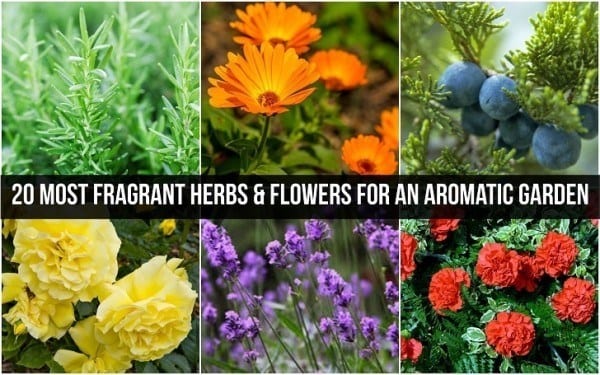
A well-planned garden should awaken all of the senses: the sight of colorful flowers; the contrasting touch of luscious shrubbery; the chirp and buzz of creatures hard at work; the flavor of freshly grown fruits and vegetables; and, of course, the scents of the season.
A sudden waft of fragrance can invigorate or relax, can stir emotions or bring back memories.
Turn your garden into a symphony of olfactory delights by selecting herbs and other plants based not just on their beauty, but also their smell.
Your aromatic garden can be as simple as a few pleasantly scented herb pots by the door, or as intricate as designated zones of complementary fragrances.
Planning Your Aromatic Garden
When designing your scented garden, don’t forget to focus on more than just the smells of the plants – remember to plan according to their color, the time of year they bloom, their size and their individual needs.
This way, you will be left with a cohesive, year round garden of stunning colors and delightful aromas.
Place stronger smelling plants like jasmine and roses in a sun spot – this is where you are most likely to relax and soak up some rays, while enjoying the beauty of these blooms.
Most plants will release their aromas better when brushed against, touched or carried by the wind, so keep this is mind when choosing planting positions.
Another good tip is to plant your herbs close to your house.
You’ll be able to enjoy their fragrance from the kitchen, and it’s easy to nip outside and retrieve the herb you require when cooking.
Some of the best plants to choose for a truly fragranced garden include:
1. Gardenia
Gardenia are one of the most well-known and loved fragrances in the garden and are always a good choice for both their scent and their beautiful blooms and foliage.
These heat-loving evergreen shrubs don’t do well in cold weather though, so they are best grown in moderate year-round climates, or planted in pots and brought indoors once it starts to get chilly.
Gardenias generally prefer partial shade and moist, yet well-drained acidic soil when outside and bright light and humidity when kept inside.
2. Dianthus
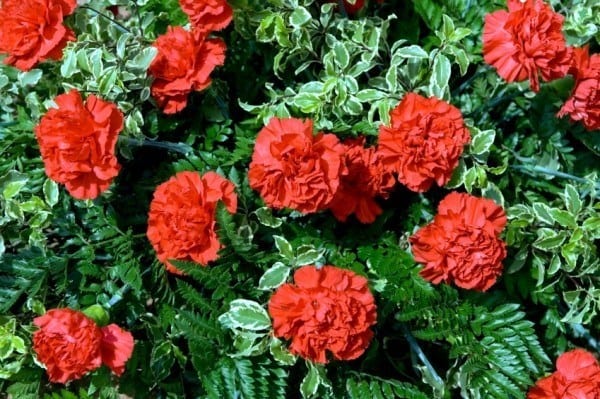
There are over 300 varieties of dianthus, including Sweet William, pinks, and carnations.
Many types of this genus have flowers with a fragrant, spicy smell similar to cinnamon or clove and most dianthus have pink, red or white flowers with notched petals.
You can source hardy annual, biennial or perennial dianthus varieties.
They are most often used in borders or potted displays and should be planted in full sun, with well-drained soil.
3. Sweet Autumn Clematis
This hardy climber grows quickly, and features handsome, deep green leaves and a mass of star-shaped, fragrant white flowers.
The sweet autumn clematis is easy to grow but due to its invasive nature will require regular pruning.
Position it in full sun and moist, yet well-drained soil.
4. Nicotiana
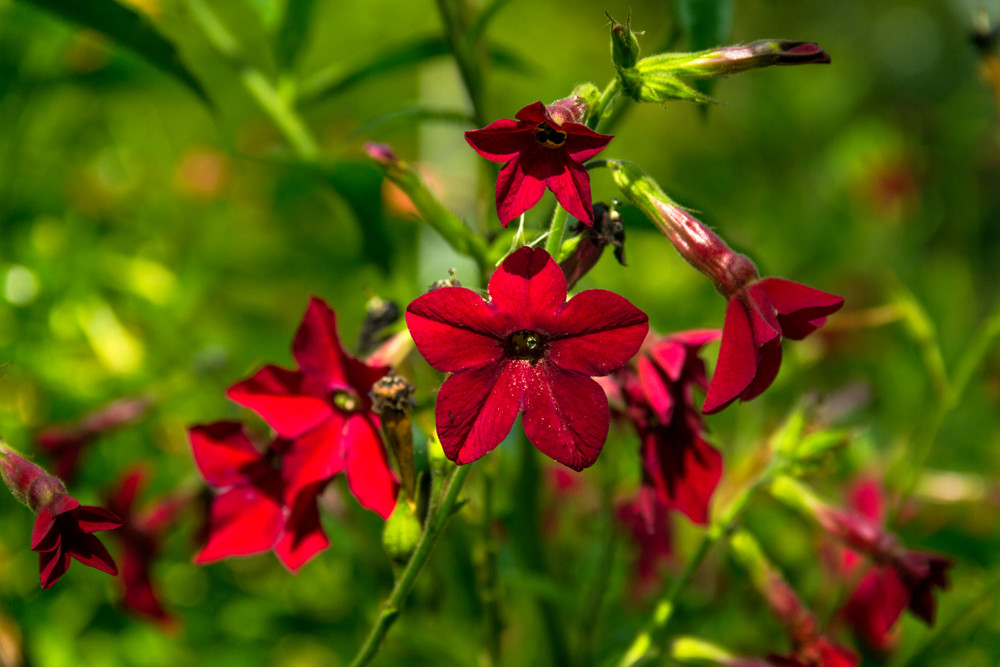
Choose one of the 67 species of this plant – in a variety of whites, pinks, reds and pastels – to fill your garden with a strong, sweet fragrance.
Because the trumpet-shaped flowers usually open in the evening or night, that’s when the scent will be strongest, so grow them on your patio or wherever you enjoy al fresco evening dining.
Keep in mind they prefer full sun to partial shade and moist soil with good drainage.
5. Oriental Lily
With a powerful scent, and beautiful speckled flower, Oriental lilies come in shades of white, pink and yellow.
Growing up to six feet, they often bloom in late summer when most other bulbs have finished.
These true lilies need well-drained soil and six to eight hours of direct sunlight a day.
Luckily, they also grow well in containers, so you can position them to best effect in your garden.
6. Calendula
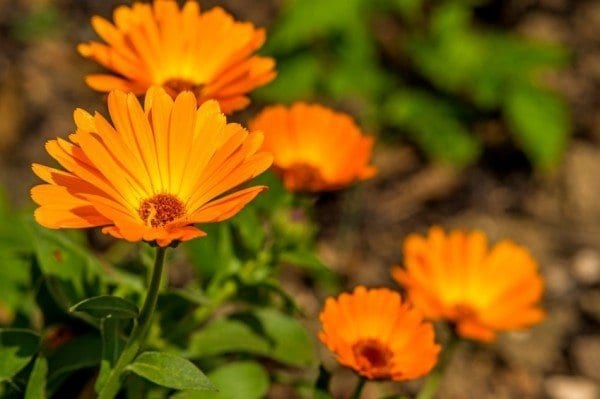
Calendula not only has a simple beauty, but it is edible, easy to maintain and offers numerous therapeutic uses.
Also known as ‘pot marigolds’, these annuals bloom constantly throughout the growing season.
The leaves are fragrant, and the flowers have a sweet, resin-like aroma … unlike most other plants traditionally grown for fragrance.
While calendula prefer full sun, they will tolerate light shade in warmer areas.
7. Lavender
This is the quintessential fragranced plant – with a soothing scent, and fantastic blue-violet flowers.
In fact, lavender oil is a common ingredient in soaps, shampoos and sachets for scenting clothes thanks to its pleasing aroma.
Researchers have even discovered that lavender produces slight calming, soothing and sedative effects when its scent is inhaled.
There are several varieties of lavender so make sure you choose one that’s right for your climate.
8. Jasmine
To enjoy a truly relaxing backyard experience, a jasmine plant or two is a must! has found that the sweet smell of jasmine is as good as valium at calming the nerves…and with none of the side effects!
It’s also an important ingredient in the perfume industry, with 83% of all women’s perfumes containing the fragrance.
There are over 300 species of the jasmine plant and, while most prefer hot climates, some varieties can be found in colder regions.
Its sweet, musky scent – which grows stronger in the evening – is unmistakable.
9. Roses
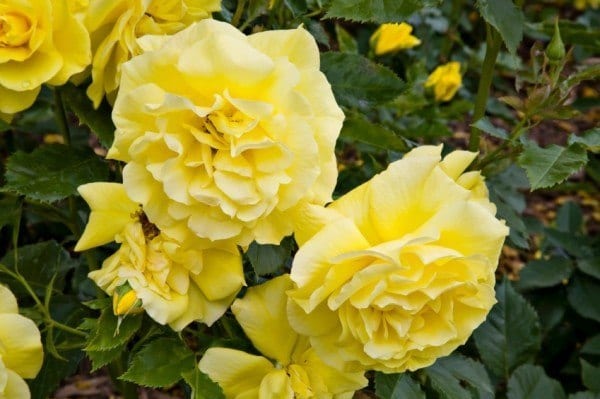
Another scented garden staple, roses are undeniably beautiful.
There are so many roses to choose from, but some of the best in terms of scent include the strongly fragrant ‘Honey Perfume’, the sweet and lemony ‘Heritage’, the rich and sweet ‘Fragrant Plum’, the intense and citrusy ‘Radiant Perfume’, the sweet ‘Louise Odier’ or ‘Madame Plantier’, the perfume-industry favorite ‘Autumn Damask’ and the dramatic ‘Double Delight’.
Before you choose your rose variety, make sure to check out these tips on growing the biggest and most beautiful roses for your garden.
10. Scented Geraniums
A cousin of the geranium, the scented variety don’t bloom as often or as impressively but their fantastic scents make them one of the best plants for an aromatic garden.
These flowers are best placed along hedging, borders, or in your favorite place to sit in the garden – the leaves of these plants need to be touched or brushed in order to release their rich smell.
Choose from a variety of scented geraniums that smell of apple, apricot, cinnamon, ginger, lemon, nutmeg, orange, strawberry, rose and peppermint!
You can grow them in pots, indoors or out, or in the ground. They like lots of sun, and will grow in most soils although they don’t do well with wet feet.
Before the first frost of fall, dig up the plants to bring indoors or take cuttings for winter growing.
11. Juniper
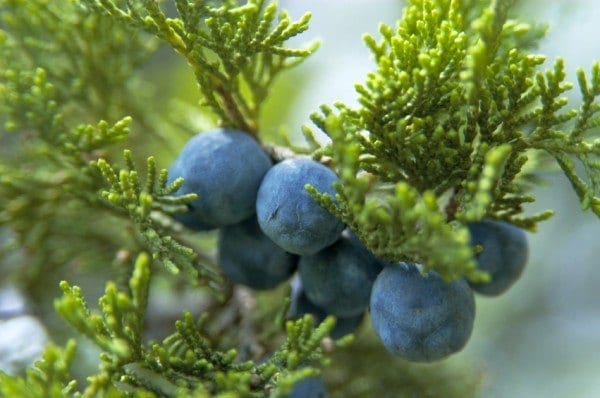
Juniper shrubs don’t need to be pruned to maintain their shape, making them a low maintenance option for a boundary hedge.
If you want to attract wildlife to your garden, while enjoying a fresh, spicy and pungent fragrance, then consider planting juniper.
The National Wildlife Federation counts juniper shrubs as one of the top 10 plants for wildlife because they provide food, shelter and nesting sites for birds.
You can also use the cones and young foliage in potpourri and to light fires!
12. Lemon Balm
Lemon balm is one of the most pleasing and fresh garden scents.
Although it’s actually a member of the mint family – with similar looking leaves and small white flowers – it has a distinctly lemony smell, hence its name!
This low maintenance herb will grow in part shade to full sun and in almost any type of soil but they flourish in full sun and rich, well-drained soil.
Like its cousin mint, lemon balm is quite invasive, although removing the flowers as soon as they appear will limit this spread.
To keep it as aromatic as possible, don’t fertilize your lemon balm plant.
13. Chamomile

This aromatic herb doesn’t just make a soothing herbal tea, it’s also a pleasure to look at (and smell) in the garden.
With small, daisy-like flowers with yellow centers and white petals, both the Roman and German varieties like cool conditions, partial shade and dry soil.
Once established, it requires little effort – chamomile is drought tolerant and fairly immune to most garden pests thanks to its strong yet relaxing scent.
14. Eucalyptus
Eucalyptus, with its silvery aromatic leaves and bark which smells like a blend of menthol and sage, is a great addition to any fragranced garden.
It prefers warmer climates – as it hails from Australia – although it thrives in moist, well-drained soil. Those who live in colder regions should grow eucalyptus in patio containers, and move indoors for the winter.
Use sprigs in flower arrangements, or dry the leaves and bark for DIY potpourri. The scent is said to relieve congestion and repel insects.
15. Bay Laurel
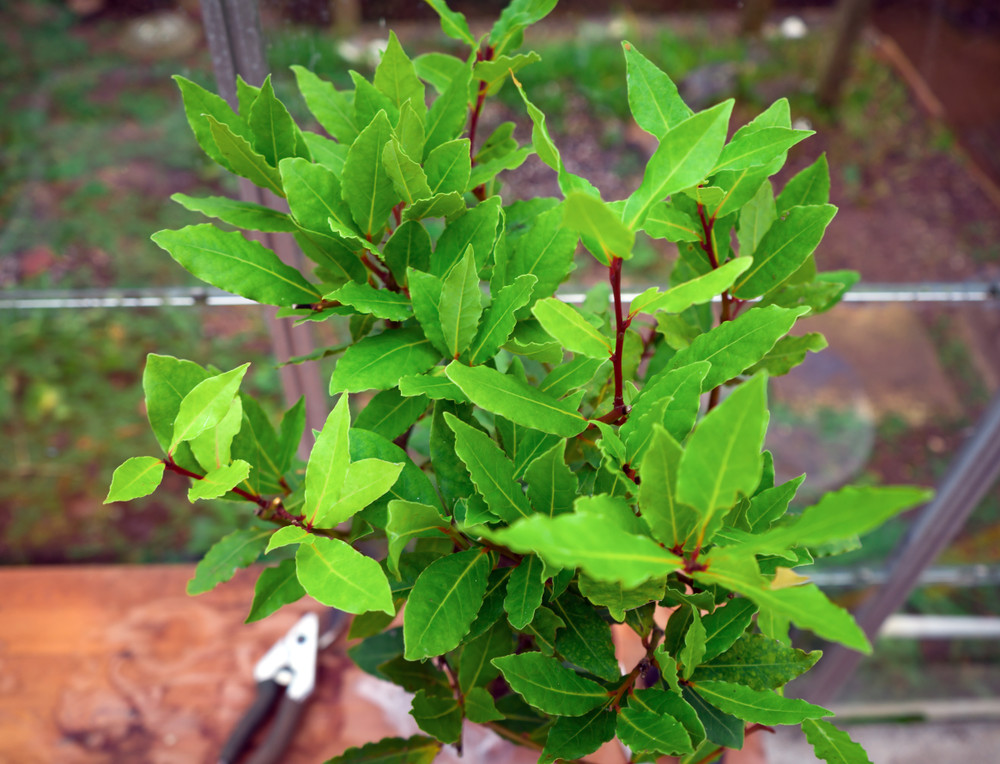
Native to the Mediterranean region, bay has a sweet and strong scent with notes of warming nutmeg.
Today, it is most well-known as a flavoring for soups and stews but it was once made into wreaths to crown the winners of ancient Greek games.
Bay doesn’t do well in most regions as it is sensitive to frost, but it’s easy to grow in a pot and bring indoors when temperatures dip.
16. Thyme
This small, perennial shrub is both pretty and functional, thanks to its light purple to pink flowers and pleasant, pungent, clover-like flavor and smell.
While there are over fifty varieties of thyme, English thyme is used most often in cooking.
Thyme does best in loamy or sandy soil, and in full or partial sun. Because the seeds germinate unevenly, starting with a seedling is a good idea.
If you practice companion planting (and here are 12 reasons why you should), be sure to plant your thyme near cabbage.
17. Rosemary
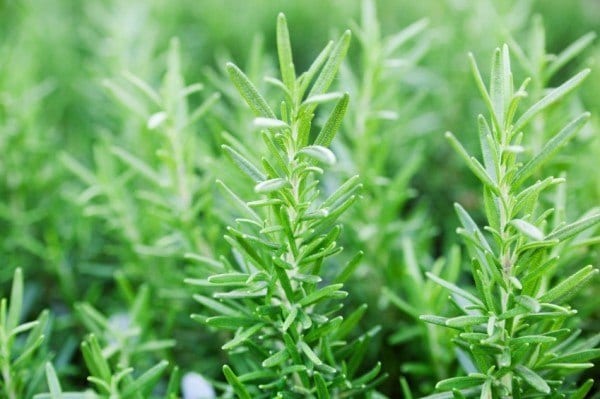
Smelling rosemary oil has been shown in studies to decrease levels of the stress hormone, cortisol, in the saliva.
It also reduces anxiety, boosts mental clarity and improves learning and memory.
When planted in the garden, its distinctive woody fragrance repels mosquitos and other garden pests.
This pungent perennial evergreen shrub, with blue flowers, is ideal for a rock garden or the top of a dry wall. You can also plant near beans, cabbage, carrots, and sage to deter pests.
If planting in containers, bring indoors in the winter.
18. Mint
Mint is another incredibly fragrant herb that is instantly recognized by its fresh and zingy scent. Try planting peppermint, spearmint, chocolate mint or orange mint in your aromatic garden.
Not only is mint delicious when made into a fresh herbal tea, or used in a variety of savory and sweet dishes, it also has medicinal properties.
For example, peppermint essential oil is known to relax, improve concentration, relieve sinuses and cure headaches.
The scent from the plant, although milder, can still have similar effects.
19. Basil
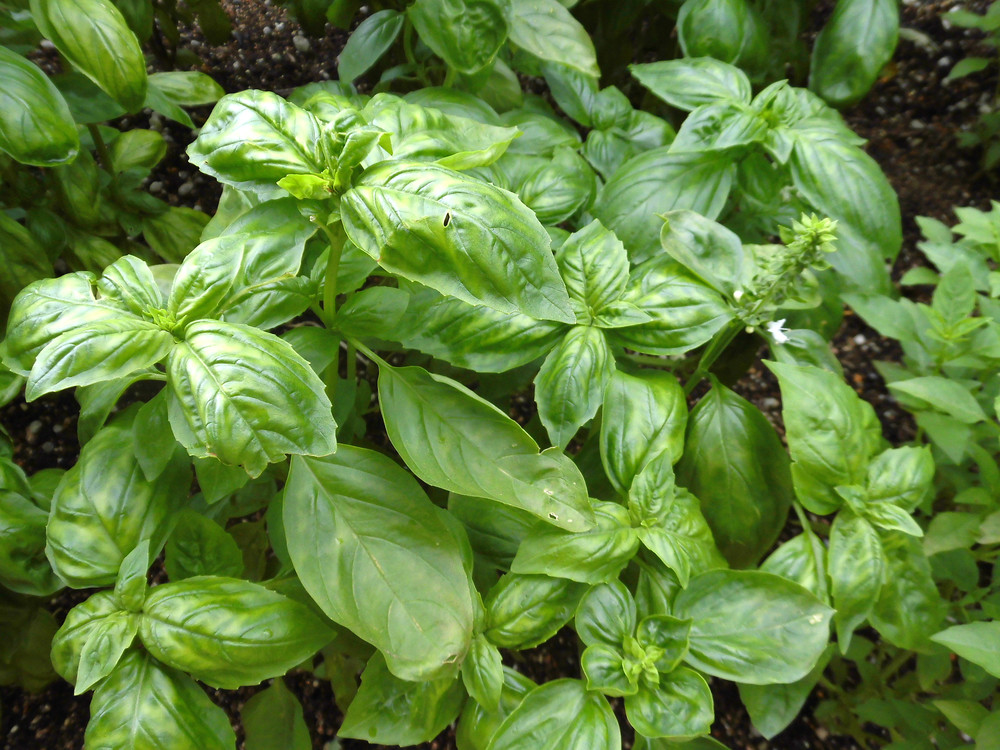
Fresh basil has a strong, pungent, peppery and somewhat menthol aroma. For those who are a fan of Italian dishes, this herb is a must in the garden.
Basil plants need full sunlight, plenty of water with excellent drainage, and warmth.
In fact, basil is so sensitive to cold that even a light frost will kill it.
In order to grow a large plant, you’ll need to harvest often. Once the flowers appear, remove them immediately to preserve the plant’s great flavor.
20. Marjoram
With aromatic leaves and warm flavor, marjoram is another great choice for those who want a fragrant garden and delicious home-cooked meals.
Its scent and taste is similar to mild oregano, but sweeter.
Marjoram is best planted in containers, window boxes and garden beds which are positioned in full sun.
The herb will grow in most types of soil with little water, but it prefers sandy fast-draining soil.
You can also use marjoram as a border to help bring your garden to life by attracting bees, butterflies and other beneficial bugs.
